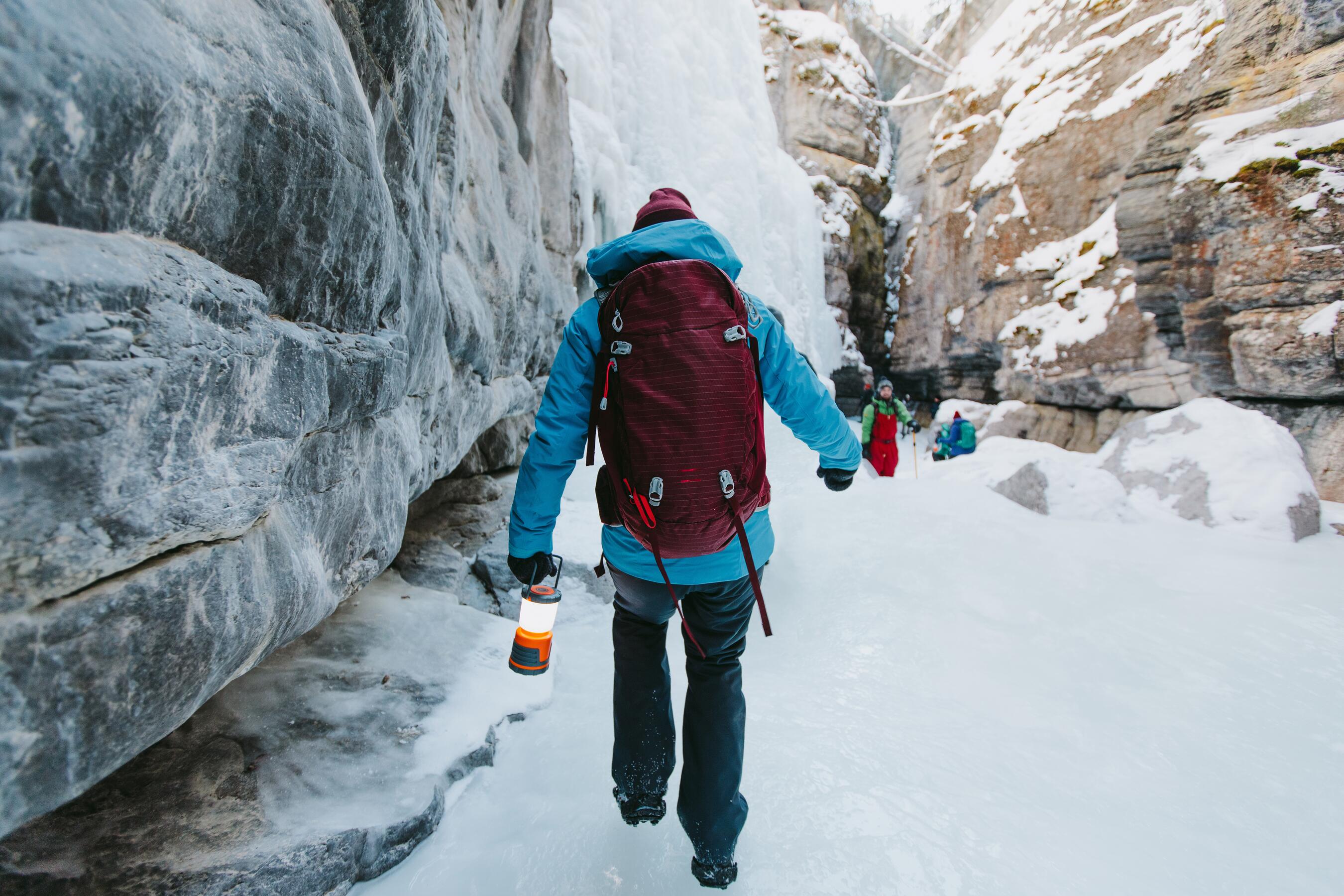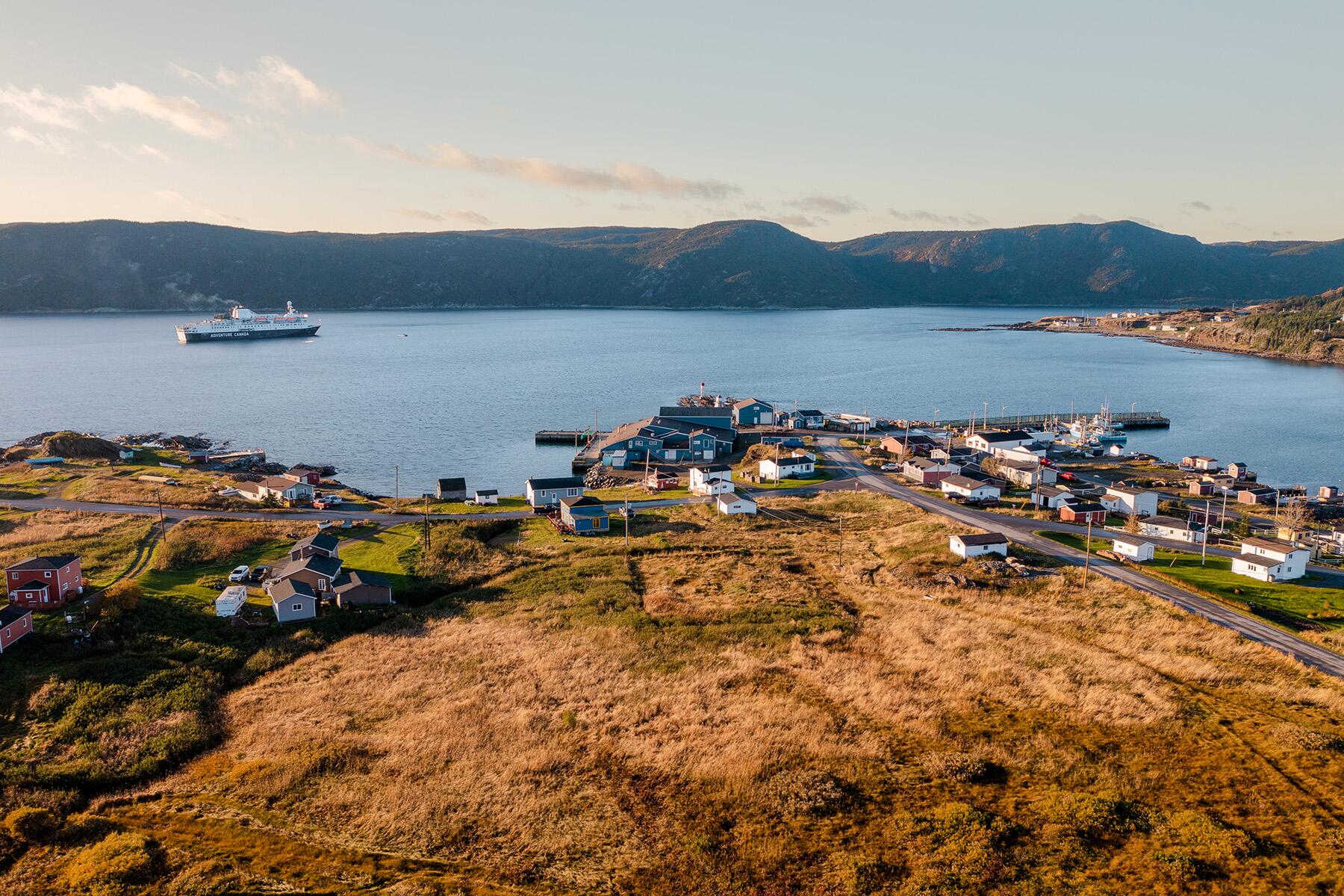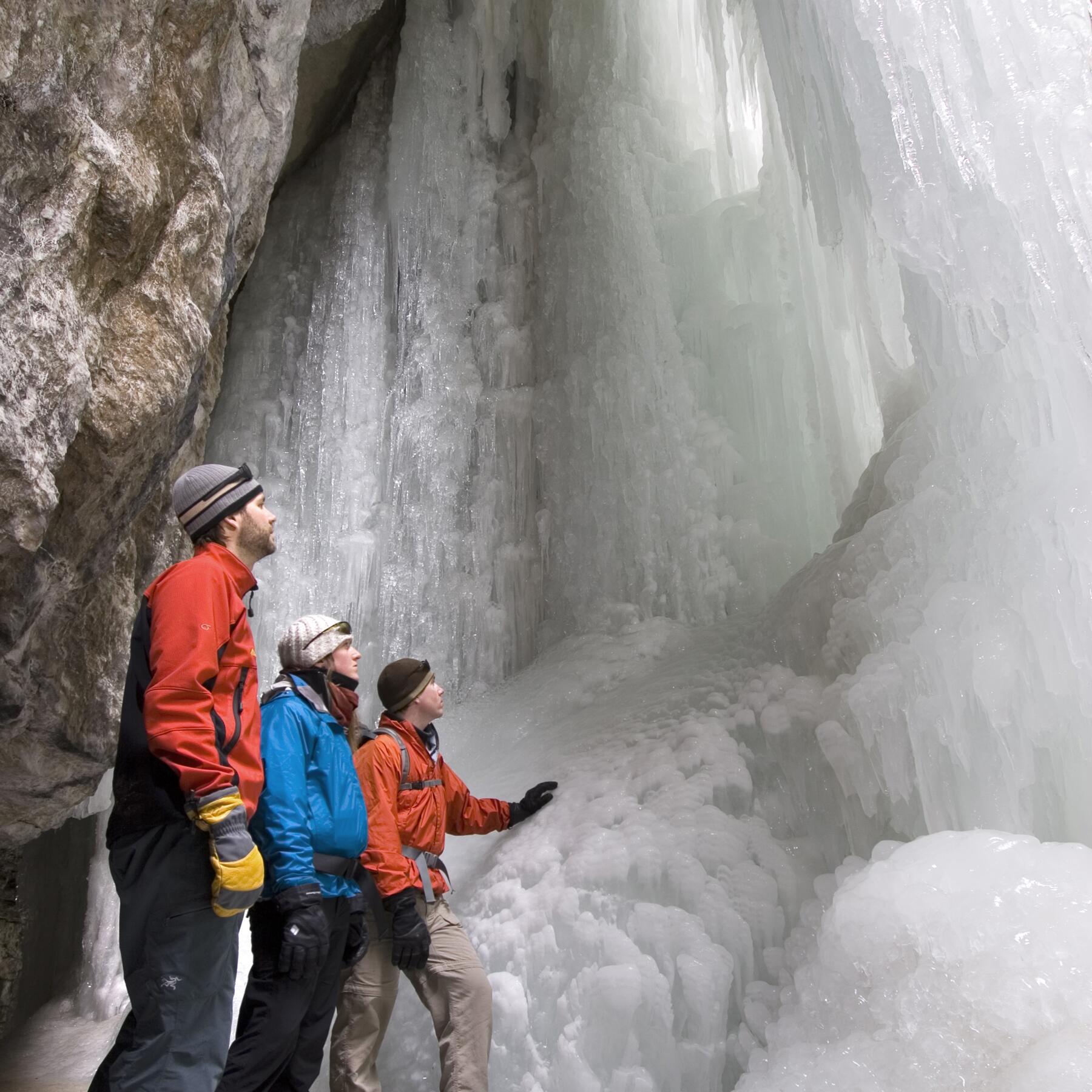One thing’s for sure: this magical place does not live up to its intimidating name.
Maligne Canyon, in Canada’s Jasper National Park, is a natural beauty that is over 365 million years in the making. Open year-round, you can take an easy loop around the trailhead and over any of the six bridges to soak in some of this slot canyon’s dramatic, over-the-rim views and unique geological features. Its deepest point is 156 feet to the floor, while you can practically jump across the six-and-a-half-foot gap at its narrowest point. It’s a sight to behold in the summer when the waterfalls are raging and the river cuts through the canyon—but winter is the can’t-miss season.
When the temperatures drop, the entire canyon freezes into an icy, otherworldly winter wonderland. The results are unbelievably gorgeous. Iced waterfalls hang off the rocks, icicles drape every surface, and icy blue veils shroud the canyon’s cave entrances. To top it off, everything is dusted with a delicate powdering of snow, just like a frozen fairy-tale fantasyland. The best part? The canyon floor is covered with a sheet of ice several inches thick so visitors can actually hike down to the canyon floor and experience this unique ice landscape from the inside.
You’d think that getting your feet on the floor of the deepest canyon in Jasper National Park would be somewhat of a struggle, but, thanks to a slow decline and clear pathway, it turns out to be surprisingly easy. The hardest part of the descent is navigating around the sneaky slick spots on the frozen pathway—and trying to ignore the fact you can’t feel your face, fingers, or toes. (Now’s the time where I give due credit to the mandatory strap-on ice cleats supplied by our SunDog Tours guide and the pocket warmers I shoved into my gloves and shoes. Without these, the experience would have been much more difficult but just as stunning).
Recommended Fodor’s Video
Maligne Canyon got its name from Pierre-Jean de Smut, a 19th-century Jesuit missionary who fell off his horse while attempting to cross a treacherous river in the Canadian Rockies. He cursed the rushing body of water for his troubles, calling it “maligne.” Unfortunately, the name stuck and spread, eventually baptizing the whole valley and its features—the river, plus a lake, mountain range, and the canyon—with a negative connotation.
Ironically, Maligne Canyon is positively breathtaking. When you’re out on the canyon floor, the ant’s-eye-views are impossibly beautiful and immediately humbling. It’s some of Mother Nature’s best work, and you can’t help but feel a little guilty that you didn’t even break a sweat to get down here. Looking up toward the canyon rim, the tall evergreens seem miles away. Hundreds of icicles, some as thick as your arm, hug the undersides of rocks and drip down the steep canyon walls.
Our cleats crunch as we make our way across the frozen floor of the river, walking past frozen blocks of ice as big and wide as cars. The ice is thick and slick, blue and white, opaque and clear—and sometimes not even ice at all. It’s 28 degrees; below the point of freezing, but the canyon is still alive. It may be cold enough to crystallize your breath in your own hair, make your toes go numb, or chill your lungs, but the water coming up from the canyon’s vast underground river system—one of the most extensive in the world—is still flowing. The sound and sight of flowing water while you’re walking around at the bottom of a massive gorge messes with you, but our guide assures us that the ice floor is safe.

Around the corner, in one of the canyon’s larger nooks, the walls abruptly narrow, the ice turns blue, and the scenery becomes even more stunning. Pieces of the floor’s ice sheet are broken off, exposing uneven ground and round rocks below. The rocks are smooth from the steady, rumbling flow of the river during warmer months. We’re all heading toward the back to check out a large waterfall that has frozen mid-tumble. It’s as if someone snapped their fingers and everything just instantly turned to ice. And yet, by some magic, there is a second waterfall cascading behind the frozen rush of ice. The nearby giant, crystal clear icicles gleam and drip as they begin to melt in the sun.
INSIDER TIPMaligne Canyon is open to the public, though going with an experienced guide who knows the area and the ice (and supplies gear like ice cleats and a helmet) is recommended. SunDog Tours offers three tours daily (morning, afternoon, and night) that depart from Fairmont Jasper Park Lodge. Daytime tours are best for viewing the ice formations, while night tours offer opportunities for stargazing from inside the canyon.
The canyon displays an exquisite variety of ice formations, textures, shapes, and cool-colored tones, from the massive abstract melted blobs to icicles resembling rows of demon’s teeth, tentacles, or needles. Also striking are the crystallized ice formations that resemble mold or freezer burn, and grow on the sides or underneath of the canyon walls. No two years here look exactly the same. In fact, no two months look the same. Each year an entirely new icy world appears on the canyon floor, only to disappear months later without a trace.
As our guide slowly shepherds us through and then out of our dreamy winter wonderland, I can’t help but feel like I just witnessed something incredibly special and I wonder what Maligne Canyon has in store for folks next year.





